Project Description
Breaking Wave is a cladding system for doubly curved building envelops. The paneling system is composed of quadrangular aluminum panels connected horizontally with standing seams and vertical flat lock seams. The generated grid of panels is composed of 1649 CNC laser cut aluminum panels that seamlessly wrap around the front and top of the shipyard. A digital twin of the model was developed and maintained during all phases of construction in order to ensure quality control. Digitally referenced markers were placed on the support structure allowing workers to have fixed reference points for each batch.
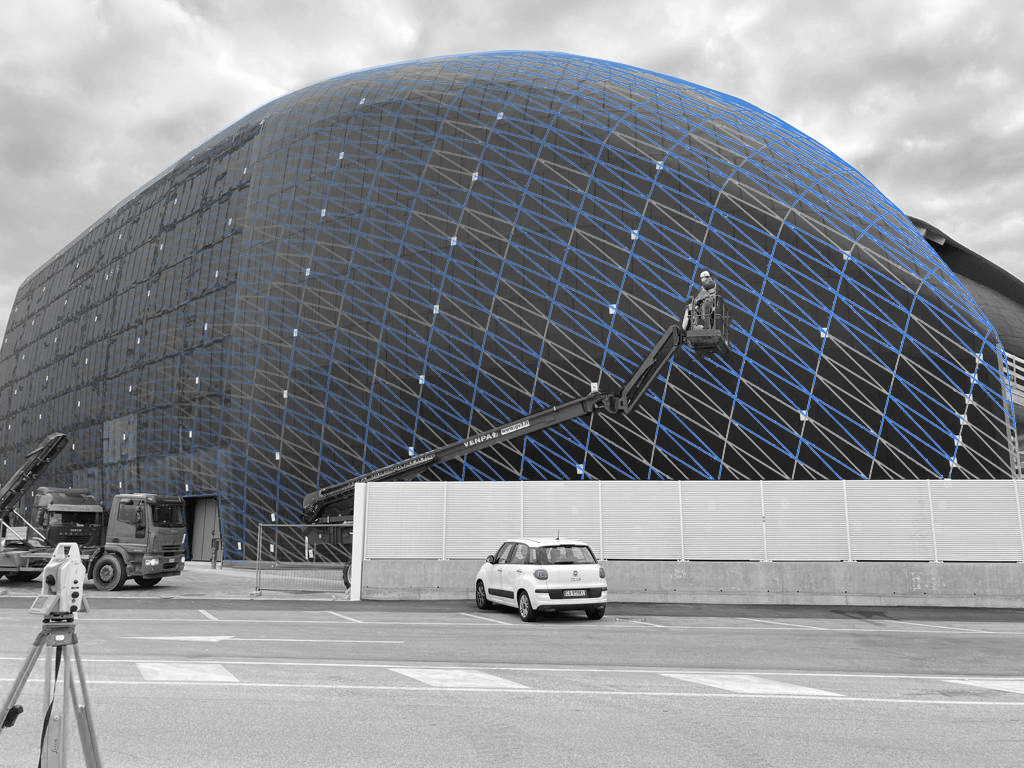
images courtesy of INDEXLAB
Sheet Fabrication
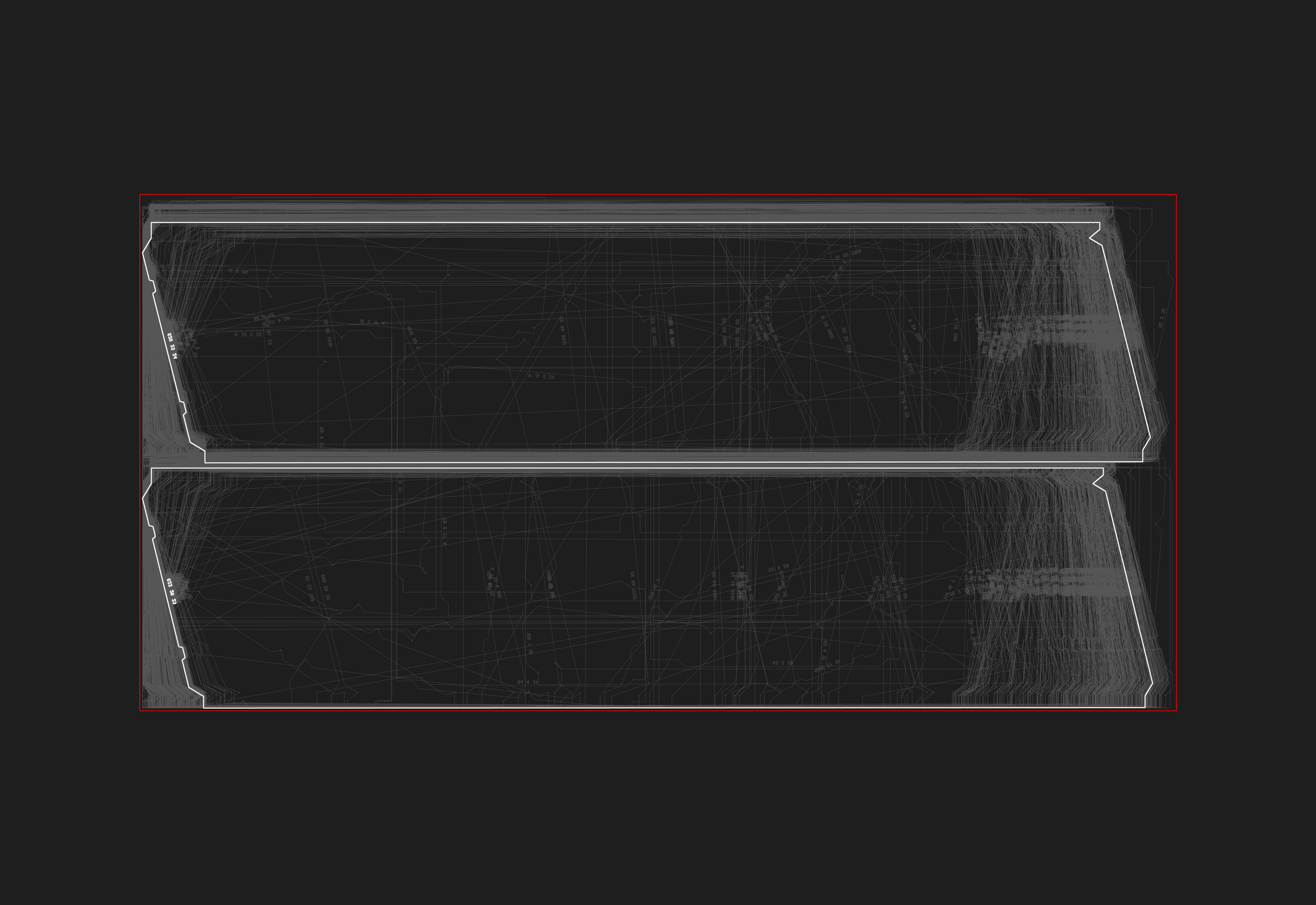
The dimensions of each panel were carefully tuned to optimize the nesting process. The panels were designed to fit a 3000x750 mm rectangle allowing to efficiently nest two panels per sheet. The edge panels of smaller shape were grouped together and nested separately to maximize yield per aluminum sheet. Multiple iterations were made to reduce the production waste of the laser cutting process, from an initial estimated 35% down to 17% per sheet, resulting in a total of 410 square meters of spared material.
Paneling System
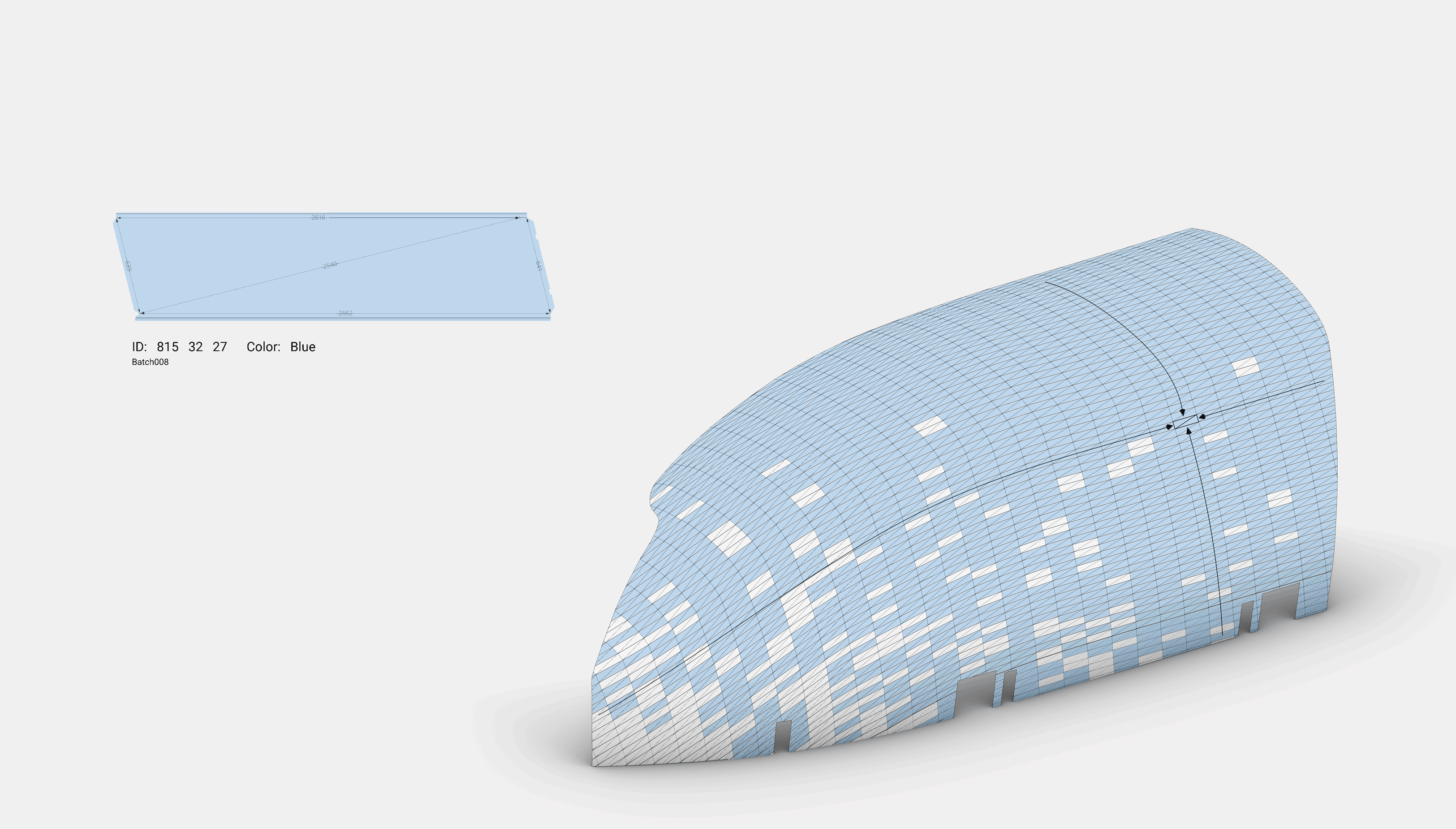
Each panel is uniquely identifiable with a numeric label that subdivides the surface in a warped 2D grid. The code is composed of three parts, a sequential index that identifies each of the 1623 panels, followed by the panel row position (from 1 to 63) and column index (from 1 to 32). This labeling system allowed to sort the manufactured panels by row before shipping them to the construction site, speeding up the assembly phase and reducing placement errors.
Algorithmic Workflow
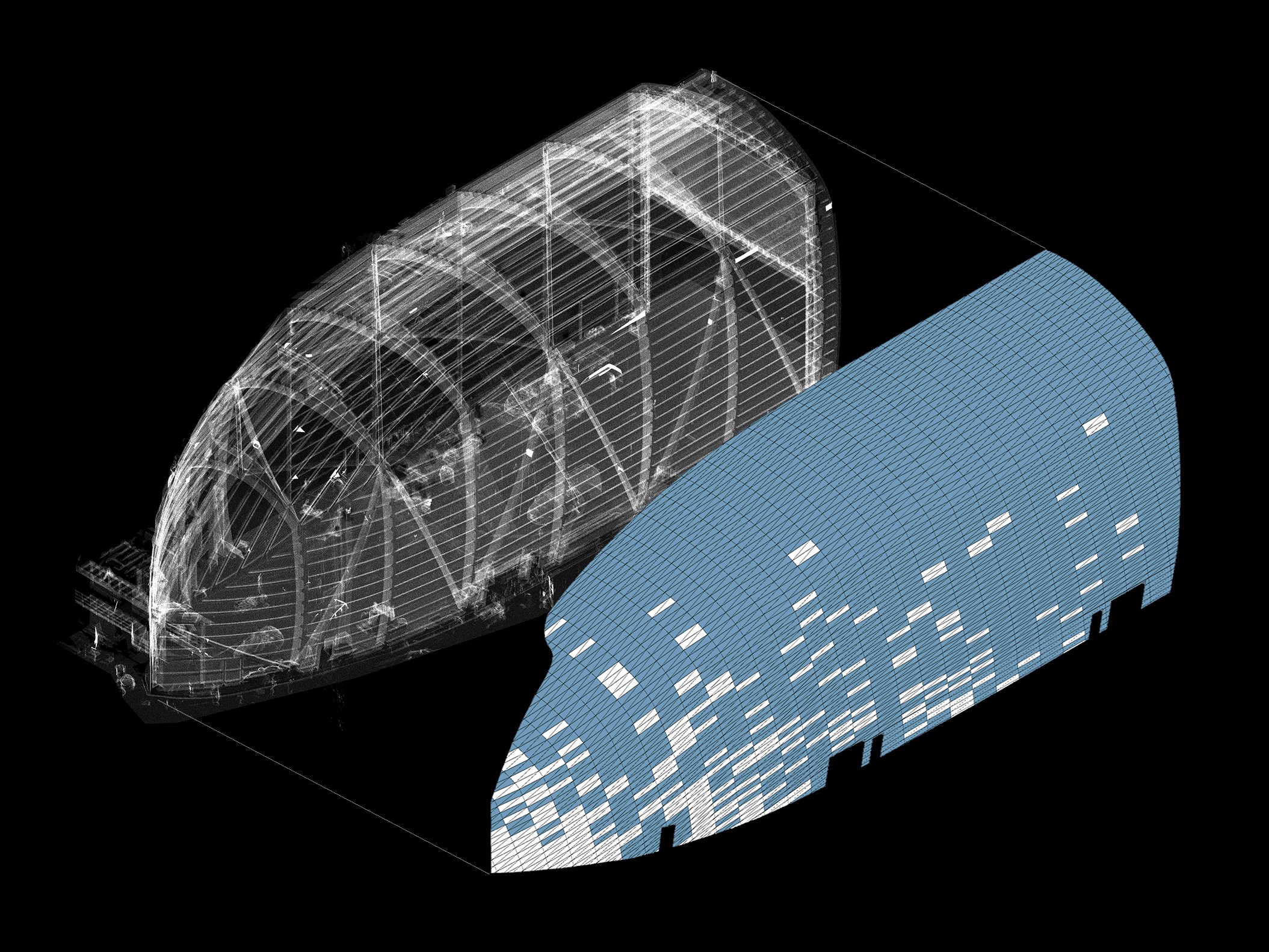
All the panels of the sixteen production batches were drafted from an end-to-end algorithm that was constantly updated through the construction phases, to compensate for slight variations of the underlying support surface. A point cloud model was developed and analyzed to ensure a reliable match between the digital model and the real life construction site, adapting each production batch to the ongoing installation and construction.
Manufacturing Documentation
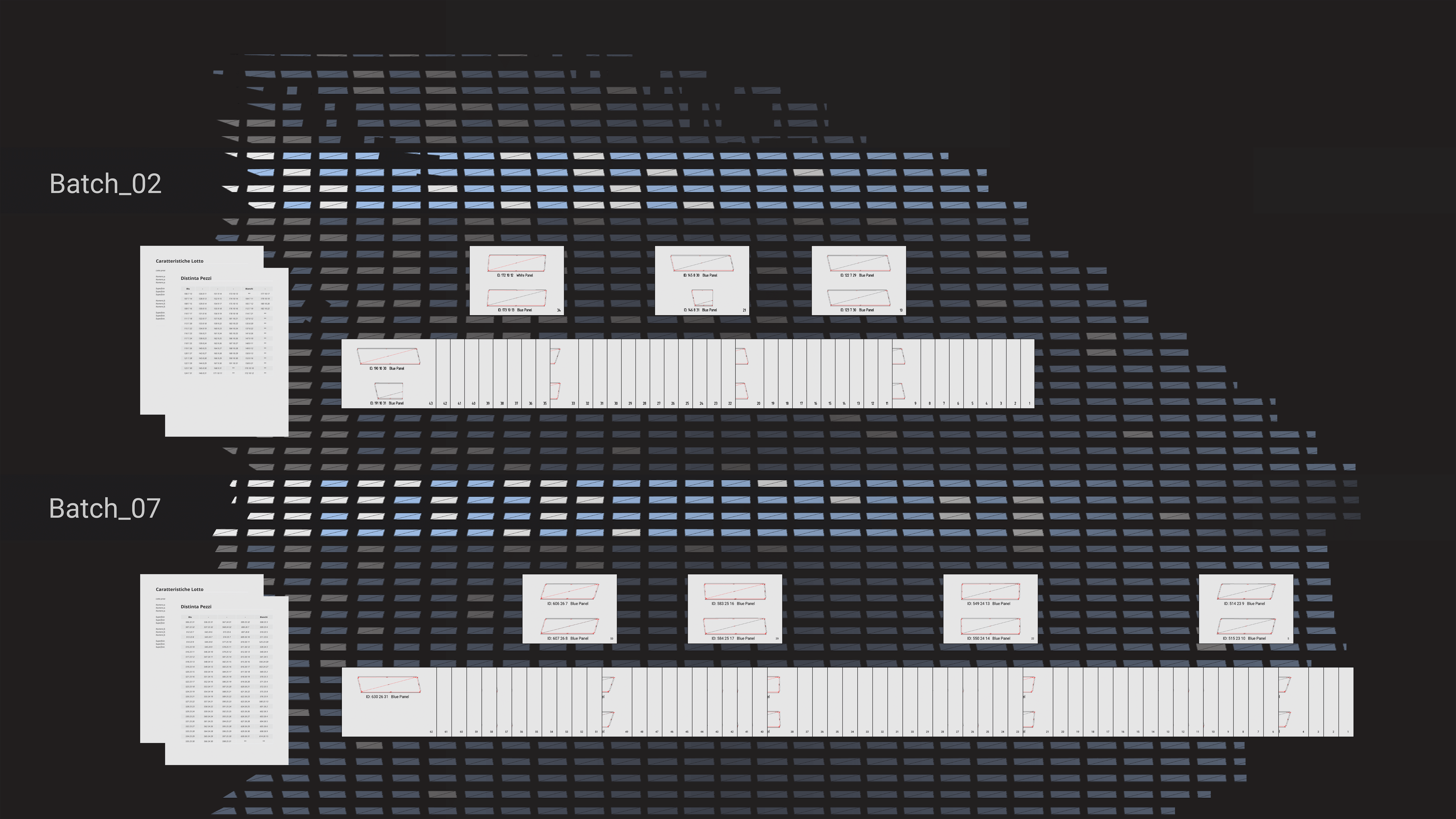
The project documentation was generated automatically from the algorithmic workflow and constantly updated through all stages of the design process. This allowed stakeholders, designers and construction companies to monitor the production progress and overall cost of the cladding system. Each production batch came with its own paper documentation containing the number of aluminum sheets required and the total amount of panels produced.